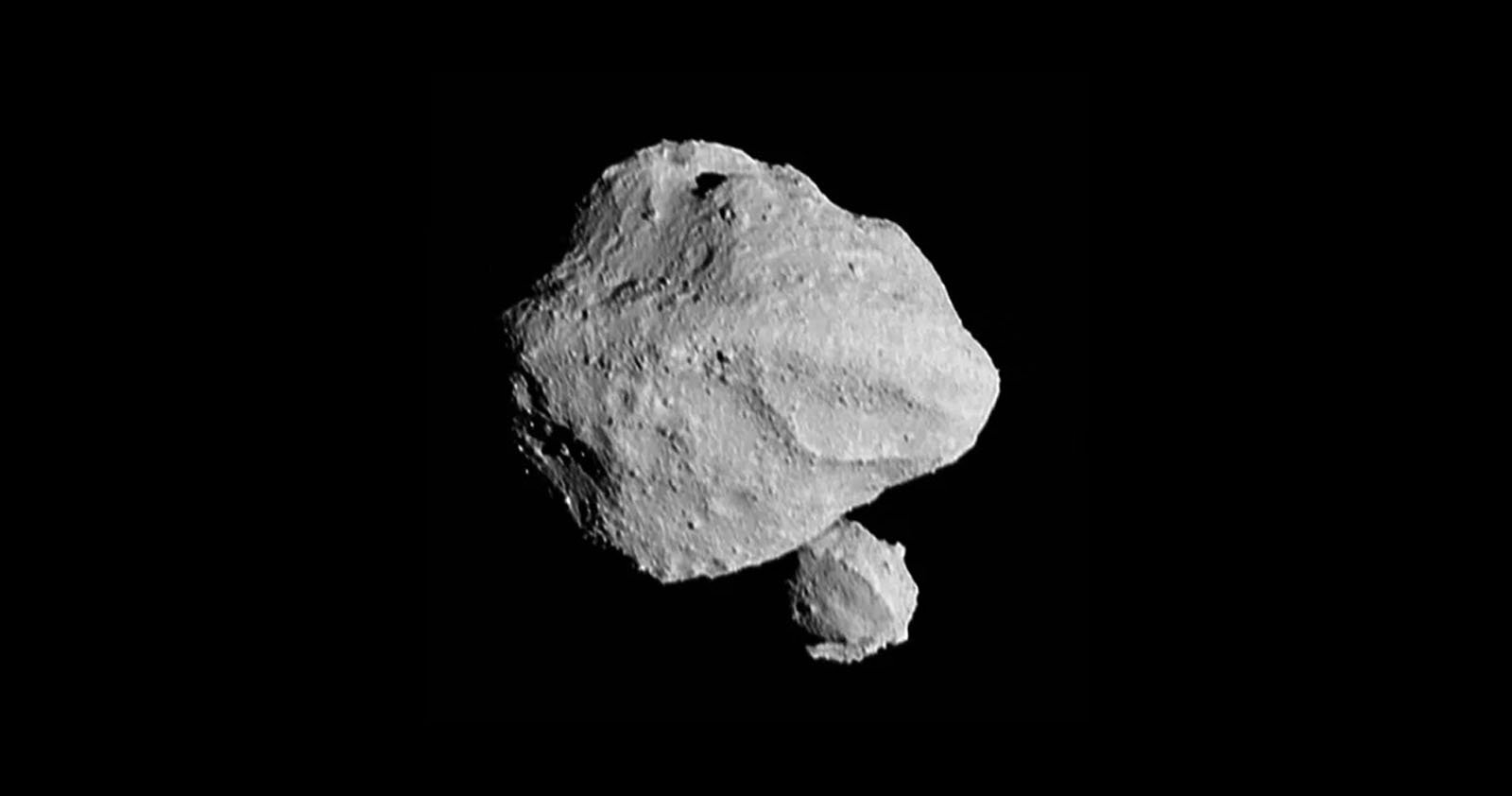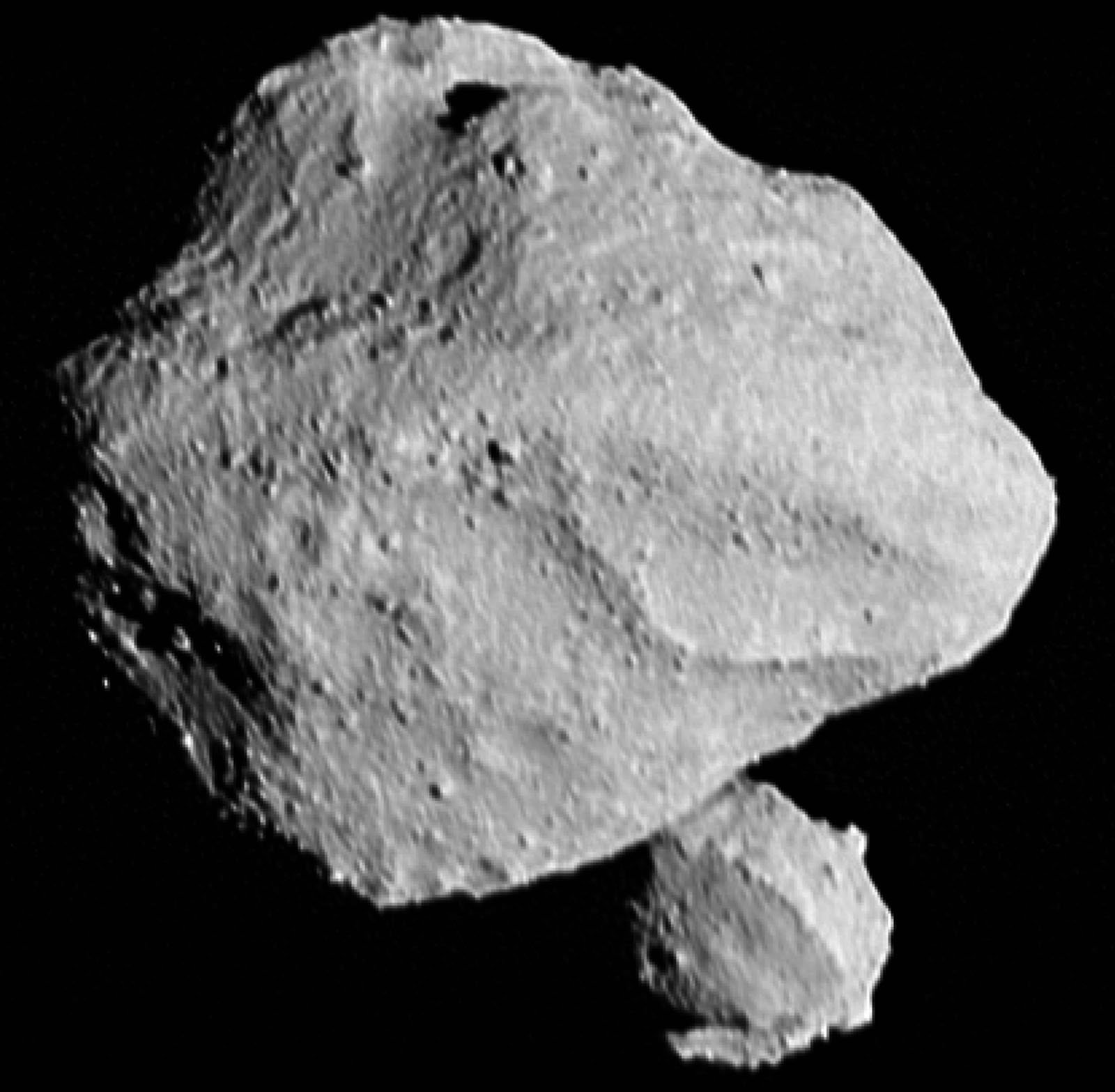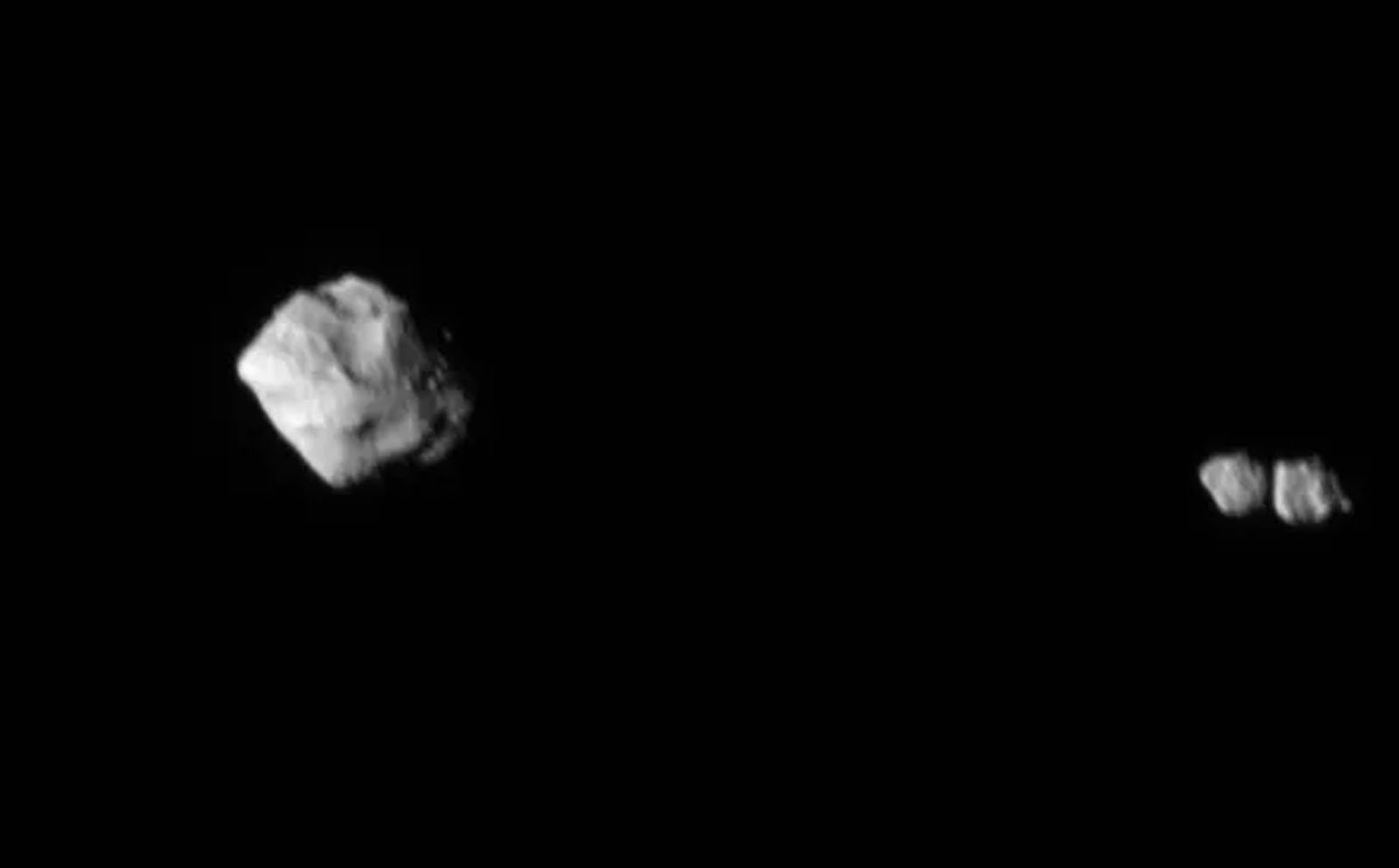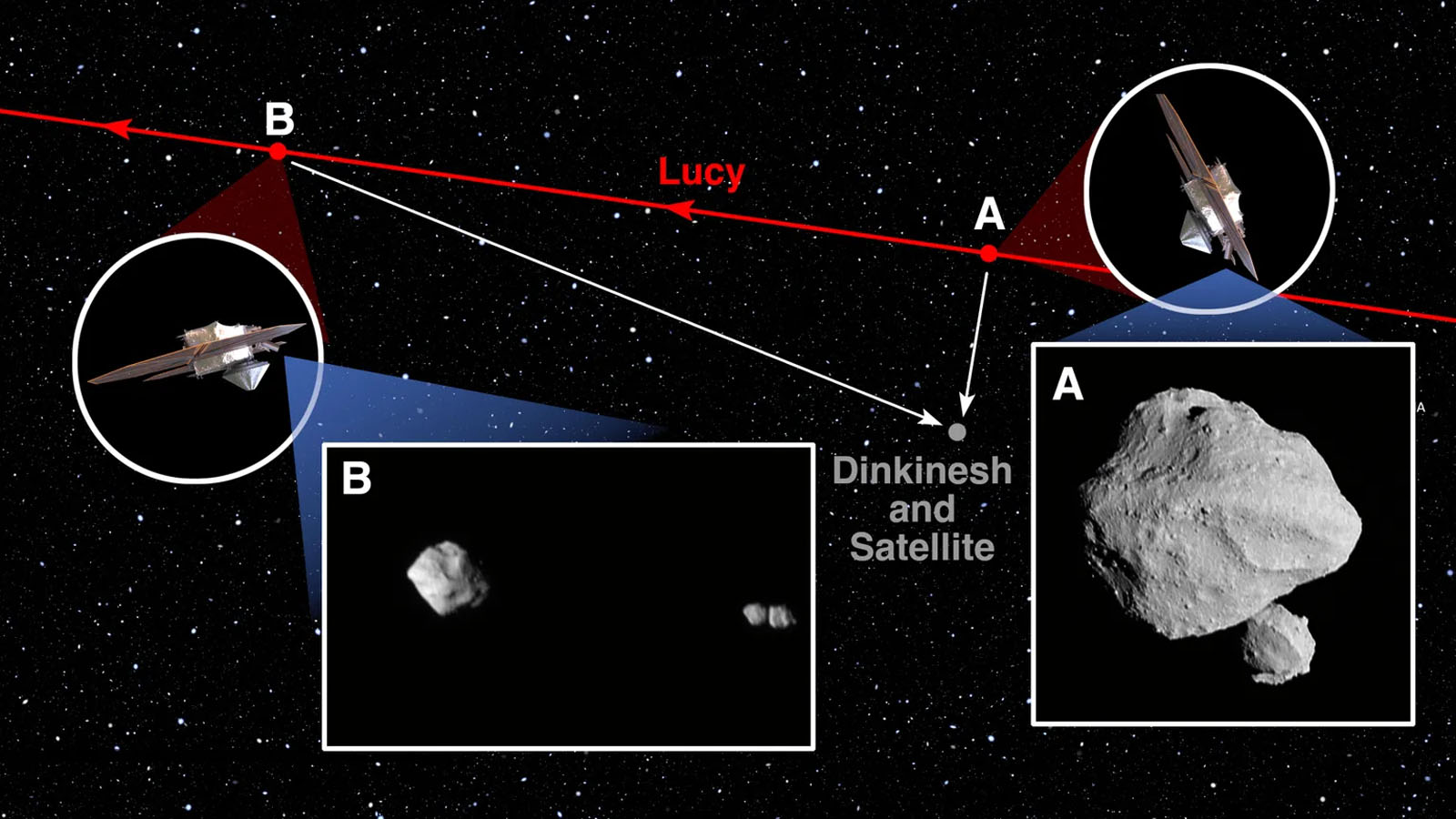NASA Spacecraft’s First Photo of an Asteroid Reveals a Surprise

NASA’s Lucy mission, the first mission to explore Jupiter’s Trojan asteroids, returned photos from its first encounter earlier this month.
In what the Johns Hopkins Applied Physics Laboratory calls a “late Halloween treat,” scientists were somewhat surprised to find that the Lucy Long Range Reconnaissance Imager (L’LORRI) instrument returned an image of not one asteroid, but two — or at least what scientists first thought was two.
Lucy team members had noticed that the target asteroid’s brightness varied in unexpected ways before the close encounter, indicating that what seemed like a single asteroid may be binary, but the groundbreaking image was required to confirm the theory.
“We couldn’t have hoped for something this spectacular when developing L’LORRI because we had no idea,” says APL’s Neil Dello Russo, the principal investigator behind L’ORRI. “But the results are nothing short of remarkable. The instrument worked flawlessly and has already made an unexpected discovery. We’re overjoyed.”

The larger asteroid, Dinkinesh, was imaged alongside its “unexpected” small satellite on November 1 from a range of about 270 miles (430 kilometers). Dinkinesh is in Jupiter’s small main belt, and while its accompanying asteroid looks small, Dinkinesh itself is very small.
Dinkinesh, an Ethiopian name meaning “you are wonderful,” is about half a mile (790 meters) at its widest point. Its little satellite is about 0.15 miles (220m) in size.
The asteroids’ minute size does little to undercut the excitement of the discovery. “Dinkinesh really did live up to its name; this is marvelous,” remarks Hal Levison, the principal investigator for Lucy. Levison works in Colorado at a branch of the Texas-based Southwest Research Institute. “When Lucy was originally selected for flight, we planned to fly by seven asteroids. With the addition of Dinkinesh, two Trojan moons, and now this satellite, we’ve turned it up to 11.”
While Dinkinesh is a welcome addition to the mission, Lucy’s primary goal is to explore the Jupiter Trojan asteroids, which are “relics of the early solar system that orbit well ahead of and behind” the gas giant. Lucy’s fruitful stop at Dinkinesh was part of a testing operation to ensure that the spacecraft’s Terminal Tracking system can autonomously track an asteroid buzzing by at 10,000 miles per hour (16,000 kilometers per hour).
The team will investigate data from Lucy’s recent encounter with Dinkinesh to prepare for its next planned encounter, a close-up look at the main belt asteroid Donaldjohanson in April 2025. Lucy will rendezvous with the Trojan asteroids in 2027.
In fact, during its November 1st encounter with Dinkinesh, Lucy captured a bit more information than the team expected. About a week later, when looking through additional data, the team saw a different view that proved puzzling and exciting.

“It turns out there is more to the ‘marvelous’ asteroid Dinkinesh and its newly discovered satellite than first meets the eye. As NASA’s Lucy spacecraft continued to return data of its first asteroid encounter on Nov. 1, 2023, the team was surprised to discover that Dinkinesh’s unanticipated satellite is, itself, a contact binary — that is, it is made of two smaller objects touching each other,” explains NASA.
This means that what at first appeared to be a single small satellite alongside Dinkinesh is actually two.
“Contact binaries seem to be fairly common in the solar system,” says John Spencer, Lucy deputy project scientist. “We haven’t seen many up-close, and we’ve never seen one orbiting another asteroid. We’d been puzzling over odd variations in Dinkinesh’s brightness that we saw on approach, which gave us a hint that Dinkinesh might have a moon of some sort, but we never suspected anything so bizarre!”
“It is puzzling, to say the least. I would have never expected a system that looks like this. In particular, I don’t understand why the two components of the satellite have similar sizes. This is going to be fun for the scientific community to figure out,” adds Levison.

The second image above was captured about six minutes after Lucy made its closest approach. The spacecraft was about 1,010 miles (1,630 km) from Dinkinesh and around 960 miles (1,500 km) from where it captured the first released image.
“It’s truly marvelous when nature surprises us with a new puzzle,” says Tom Statler, Lucy program scientist from NASA Headquarters in Washington. “Great science pushes us to ask questions that we never knew we needed to ask.”
Image credits: NASA/Goddard/SwRI/Johns Hopkins APL